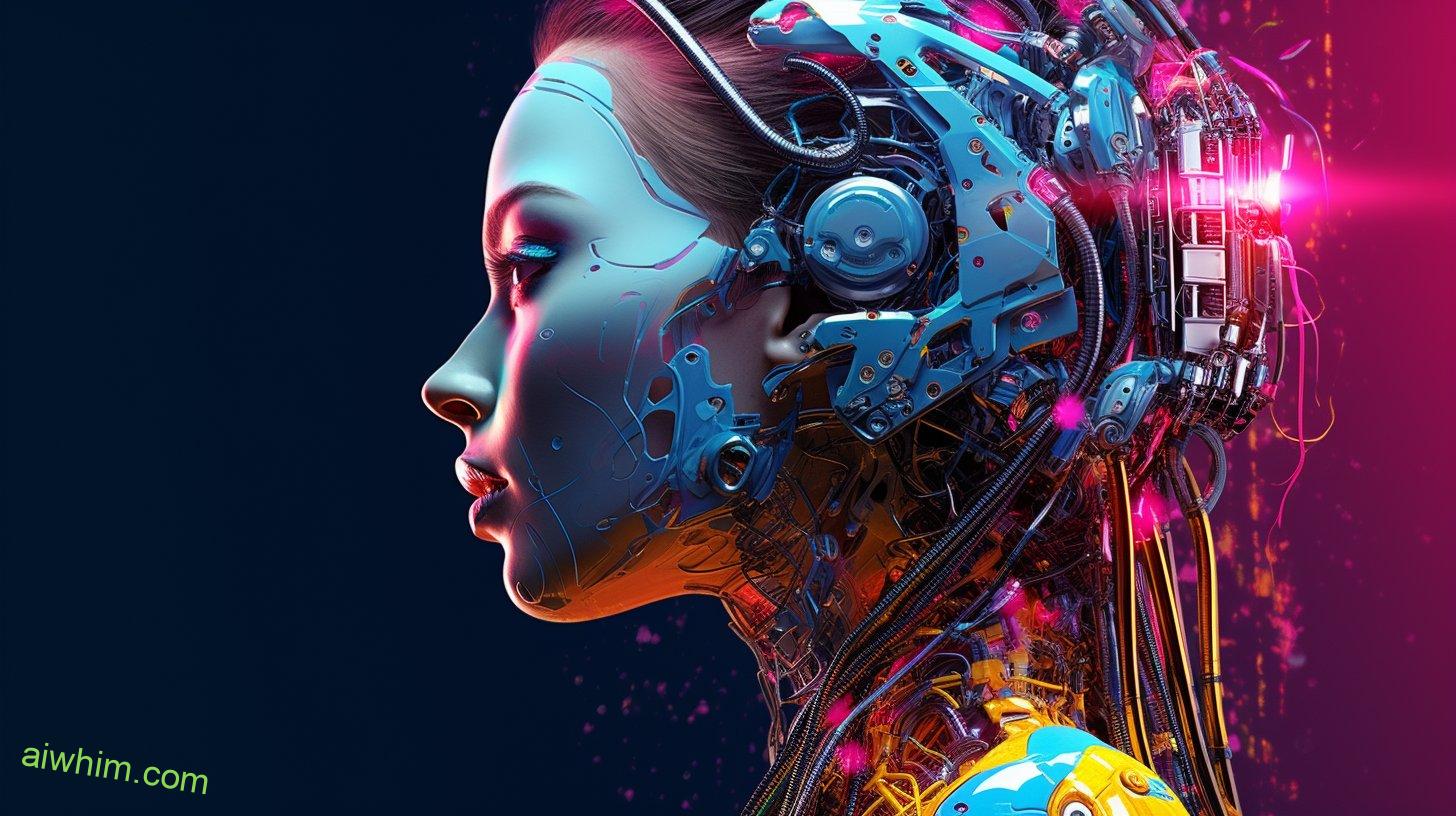Irony of the digital age: could it be that with all the advances in technology, your job as a social media manager is at risk? We’re living in a time when chatbots and AI are slowly replacing human labor. But can they really handle the responsibility of managing our online presence on social media platforms? Is there any hope for those who make their living keeping us visible to potential customers?
The idea may seem far-fetched now – after all, isn’t social media management about more than just automated posting? It requires creativity, knowledge of trends, understanding consumer behavior and an ability to engage with people online. Surely these tasks require someone who’s “real,” right?
But what happens if companies realize that using machines instead of humans can save them money – both in terms of salary and hours invested – while still getting results? Could it be that soon enough, robots will take over this role too? That’s why we must ask ourselves: is there a risk your job as a Social Media Manager will be replaced by chatbots and AI?

Before we delve into the topic, check out our study to see if social media managers are among the top 100 jobs facing the imminent threat of AI.
Definition Of Automation In The Workplace
Automation is the use of technology to automate tasks in the workplace. It involves using machines, processes and software programs to replace manual labor or increase efficiency. Automation can be seen as a form of technological advancement, which helps reduce costs and improve output quality by eliminating manual errors and reducing repetitive tasks associated with human labour. In some cases, automation may even allow companies to do more with less staff, while still providing high-quality results.
The definition of automation in the workplace is broad and can refer to anything from robots replacing assembly line workers to automated customer service chatbots responding to inquiries online. As technology advances, it’s becoming easier for businesses to utilize automation solutions that are faster, smarter, and more cost effective than ever before. This is leading many people to wonder if their jobs could potentially be replaced by automation – including social media managers who already rely heavily on digital tools like content management systems (CMS) and analytics platforms.

Advantages And Disadvantages Of Automation
As the saying goes, there are two sides to every story. Automation in the workplace is no different; while it has its advantages, like increased productivity and cost reduction, it also carries certain risks that should be taken into account.
To start with the good news: automated processes offer a number of benefits to businesses. For example, they can increase efficiency by streamlining operations and freeing up employees’ time for more value-added tasks. They also reduce costs associated with labor and materials as well as improve accuracy through consistent quality control measures. Finally, automation can provide organizations with access to real-time data which allows them to make better decisions faster.
On the flip side, however, some automated processes may have unintended consequences or require significant upfront investments before realizing their full potential. Additionally, if implemented incorrectly or without proper oversight, automation can lead to decreased job satisfaction among workers due to less autonomy over their workflows. Moreover, there is always a risk that your job as a social media manager could be replaced by chatbots and AI – something you need to consider when evaluating whether automating certain tasks is right for your organization.
All things considered, automation clearly offers numerous advantages but comes with its own set of drawbacks too – each business must weigh these pros and cons carefully before deciding how much automation makes sense for them.

Impact Of Automation On Social Media Management
The rise of automation has had an impact on social media management. Automation tools such as chatbots and artificial intelligence (AI) have been used to automate many aspects of the job, including customer service, content creation and analysis. This has made it easier for businesses to manage their social media accounts with fewer resources. However, there is still a need for human expertise in managing complex tasks like strategic planning or creative problem-solving.
While AI and chatbot usage may be increasing in social media management, they are not completely replacing humans yet. Human managers are still required to oversee automated processes and monitor results to ensure that goals are met. They also possess a deep understanding of how customers think and behave that machines do not currently possess. As such, while automation can help streamline some aspects of social media management, it cannot replace the skillset needed by an experienced manager who understands both technology and people.
Pros And Cons Of AI And Chatbot Technology
The use of AI and chatbot technology is becoming increasingly widespread in many aspects of life, including the social media management industry. There are both pros and cons to implementing this technology. On one hand, there are several benefits that come with using AI and chatbot technology for social media management. For example, it can help streamline processes by automating mundane tasks such as responding to standard customer inquiries or scheduling posts. Additionally, it can offer insight into customer behavior based on data analysis which could be used to improve content strategies.
However, there are also some drawbacks associated with utilizing AI and chatbot technology. For example, this technology cannot provide personalized responses to customers’ needs like a human can – something which might be important when dealing with sensitive topics requiring empathy. Furthermore, automation comes with its own set of risks due to potential glitches within the software or incorrect configurations resulting from manual errors during setup. Despite these challenges, however, the advantages offered by AI and Chatbot Technology suggest that even if jobs do become replaced by them in the future, they will still remain an invaluable resource for businesses worldwide.

Challenges To Using Automation In Social Media Management
It is true that automation technology, such as chatbots and AI, can be used for social media management. However, there are some challenges to implementing this type of automation. Despite the potential benefits of using automated tools in managing a company’s social presence, it isn’t always easy or cost-effective to implement these solutions. There are numerous obstacles related to the implementation of AI or chatbot technology into a business’s existing social media operations.
For one thing, businesses must invest resources into researching which technologies would best suit their needs and how they should go about integrating them into their existing systems. Furthermore, they may also need specialized personnel with technical knowledge on setting up and maintaining the required software or hardware. Additionally, companies will have to consider any risks associated with an automated system malfunctioning or misinterpreting data—such as posting inappropriate content from customer feedback surveys—as well as privacy concerns regarding user data storage.
Overall, while advancements in automation technology present an opportunity for businesses to increase efficiency in managing their online presence, there are still many considerations that must be taken into account when considering its implementation. Ultimately, careful research and thought must be given before investing in any form of social media automation for a business’s operations.

How Automation Can Enhance Social Media Management
Social media automation can be an invaluable tool for any social media manager. Automated tools help to streamline the process of posting content, scheduling posts and tracking metrics. With automated social media platforms, a manager can save time by creating campaigns in advance and have them run automatically according to the desired schedule. This allows managers to focus their attention on more important tasks like engaging with customers and developing creative strategies.
Automation also has several benefits when it comes to managing multiple accounts simultaneously. By using automation tools, users can post content across multiple accounts with one click while making sure they are customized appropriately for each platform. Automation also enables businesses to track key performance indicators such as reach, engagement, likes and shares so that they know how effective their efforts are at any given moment.
Analyzing data is essential for understanding customer behavior and reaching marketing goals but it’s often a tedious task that takes hours or even days of manual analysis. Automation makes this process easier by providing insights into trends quickly through analytics dashboards which provide comprehensive reports about customer activity over time. Additionally, AI-powered automation solutions enable marketers to identify opportunities faster than ever before by looking for patterns in customer feedback or conversations online. Through these capabilities, automation provides greater efficiency and accuracy when crafting successful social media strategies.

Potential Risks Of Relying Too Heavily On Automation
Although automation can enhance social media management, there is a risk of overreliance. Companies should be aware of the potential pitfalls and drawbacks associated with relying too heavily on automation tools.
The use of bots and AI in job roles such as social media management has the potential to replace human labor. Therefore, companies must take precautionary steps to mitigate any risks posed by an over-reliance on automation technology. Factors that need consideration include understanding the limitations of automated tasks, developing strategies for monitoring their effectiveness, and ensuring compliance with privacy regulations. Additionally, it is important to ensure that customer service representatives remain available when needed as some issues cannot be handled solely through automated processes.
Companies also need to balance cost savings from automation against long-term investments in people who understand how best to utilize these new technologies. It is essential that businesses have efficient systems in place for identifying areas where automation would be beneficial while avoiding reliance on this type of technology alone. Ultimately, the goal should be to achieve optimal results through careful evaluation and implementation of both manual and automated processes.

Steps In Considering Automation For Social Media Management
The thought of automation replacing your social media management skills can be daunting, to say the least. As you browse through articles about automated social media and consider automation for yourself, a sense of panic may start to creep in. But don’t worry – there are ways to evaluate automation and ensure that it’s best for your business.
First and foremost, assess the cost associated with implementing an automated system versus hiring a human manager or team. Automation strategies typically require upfront investments in software and other related tools, so make sure you’re aware of these costs before taking any steps forward. Additionally, it’s important to keep in mind the level of control required when using an automated platform; if too much manual input is needed, then automation might not be the right solution for your company.
Finally, take time to research potential platforms or services available on the market today. Be sure to read reviews from current customers as well as industry experts who have experience with such systems. With this information at hand, businesses should be able to make an informed decision regarding whether they want to pursue automated social media solutions or continue relying on traditional methods like employing humans managers.

Alternatives To AI And Chatbots In Social Media Management
Though there is a risk of AI and Chatbot technologies replacing social media managers, it doesn’t mean that those who are currently employed in the field should be worried. There are still several manual methods they can use to ensure their job remains relevant.
First, content curation is an important factor for any successful social media manager. It requires creating original content or finding existing work from other sources and making sure it’s properly credited. Additionally, by using various tools such as Google Alerts and Sprout Social, social listening can help social media managers monitor what people are saying about their brand online.
Second, Influencer marketing can also be beneficial when done correctly. This involves working with influential individuals in order to reach more potential customers through promotions, endorsements, and product reviews. Finally, customer service is another essential aspect of managing social media accounts; responding to comments quickly and efficiently helps maintain relationships with both current and potential customers alike.
Social media management requires hard work and dedication but it’s far from becoming obsolete due to technological advancements like chatbots or AI-powered algorithms. By utilizing these alternative methods outlined above, anyone currently employed as a social media manager has little reason to worry about losing their job anytime soon.

Laws And Regulations In AI, Chatbot, And Automation Usage
As the use of AI, chatbot and automation technologies begin to take over in various industries, it is essential to understand the laws and regulations that come along with these new tools. The implications they have on our lives are mind-boggling! From automating mundane tasks like data entry to creating complex algorithms for decision making, every legal detail must be taken into account when utilizing automation usage.
The first step towards understanding the law surrounding ai usage and chatbot technology is recognizing what activities are governed by certain laws. For example, if an organization wants to deploy artificial intelligence or automated systems for its customer service operations, there may be restrictions on how much personal information can be collected from customers. Additionally, organizations need to make sure that any decisions made using such technologies comply with applicable privacy laws as well as other relevant regulations.
In order to ensure compliance with all appropriate rules and regulations regarding automation usage, companies should conduct regular reviews of their procedures and policies. This includes assessing whether specific processes are being followed correctly; identifying potential risks associated with automation; ensuring employee safety when working around automated systems; and confirming that all necessary contracts governing the use of machines are properly executed. Furthermore, organizations must remain mindful of changes in local jurisdiction laws which could affect the way they operate their automated services – this will help them stay up-to-date with the latest developments in technology law while avoiding costly fines or penalties due to noncompliance.

Cost Of Manual Vs. Automation In Social Media Management
When considering the cost analysis of manual versus automated methods in social media management, it is important to weigh both options. Manual methods require more hands-on effort and can be time consuming, while automated processes use technology to automate certain tasks that would otherwise need a human touch. However, there are pros and cons associated with each approach. Manual methods offer greater control over content creation and have fewer risks involved than automated ones; however, they tend to require higher upfront costs due to employee labour or software licenses. Automated methods provide faster production times but come with potential security vulnerabilities if not monitored closely. Additionally, since AI and bots are constantly evolving, updates must be maintained regularly which adds additional costs for development teams.
Overall, when deciding between manual and automated methods for social media management, it’s essential to consider the specific needs of your organization as well as any potential risks before making a final decision. Both approaches may have their advantages and disadvantages depending on the situation at hand but ultimately what works best will depend on how much resources you’re able to allocate towards either option. Ultimately, it is up to the individual or organization’s discretion in order to make an informed decision on which route is right for them.

Enhancing Human-Aided Automation In Social Media Management
Building on the cost analysis of manual versus automated methods in social media management, this section will explore strategies for enhancing human-aided automation. In order to optimize a successful system of human-machine collaboration, organizations must ensure that their automated processes are improved with proper oversight and support from humans.
First and foremost, companies should focus on improving their existing workflow by streamlining processes such as content creation and scheduling. This is best achieved through AI technologies like natural language processing (NLP), which can help to automate tasks while preserving the quality expected from human efforts. Additionally, it’s important to integrate an efficient monitoring process into the automated system so that any errors or discrepancies can be quickly identified and rectified before they cause major damage to your brand reputation. By having a reliable monitoring system in place, you can also keep track of changes in trends or customer preferences more easily than if relying solely on manual input.
Finally, businesses need to make sure that there are sufficient resources allocated towards automation improvement initiatives. Investing in additional training for personnel involved with managing these systems may be necessary to ensure that everyone understands how best to use them for ensuring optimal social media optimization. Furthermore, investing in advanced tools and platforms will help create an environment where teams can collaborate efficiently together using both manual and automated processes supported by appropriate human oversight.

Ethical Considerations For AI And Chatbots In The Workplace
As the use of AI and chatbots in the workplace increases, so too do ethical considerations. Employers must be aware of potential pitfalls when they decide to automate functions traditionally done by humans. If a company is considering introducing automation into its operations, it should consider these key points:
- Employee Rights – Automation can potentially replace human jobs, leading to an increase in unemployment rates. Companies need to ensure that employees are treated fairly throughout the transition process and that their rights are respected.
- Data Privacy – The data collected through automated systems needs to remain secure and not be shared without permission or used for any purpose other than what was intended. Companies should have strong policies about how employee data will be handled and regularly review them to comply with changing laws.
- Social Impact – Automated processes may also affect society as a whole, from economic impacts such as job losses to environmental consequences caused by increased energy consumption. Organizations should weigh up all potential outcomes before implementing new technologies and make sure they act responsibly when doing so.
These ethical considerations should be taken seriously when introducing automation into the workplace. It’s important for companies to understand both the short-term and long-term implications of using AI or chatbots in order to protect their employees’ rights, maintain data privacy standards, and minimize social impact where possible. Failing to do this could lead to significant legal repercussions or reputational damage down the line.

Examples Of Successful Use Cases Of AI And Chatbots
Despite the potential risks associated with using AI and chatbots in the workplace, these technologies have proven to be beneficial in numerous cases. Companies across multiple industries are finding success in leveraging ai-powered chatbots to automate workflows, provide customer service support, manage social media platforms, and launch automated marketing campaigns.
For instance, many companies use virtual assistants powered by natural language processing (NLP) to respond quickly and accurately to customer inquiries. These bots can handle basic tasks such as booking appointments, providing product information and advice, or helping customers navigate their way around websites or applications. Additionally, businesses can deploy social media bots that monitor conversations on various platforms for customer service opportunities as well as identify trends related to products and services that could lead to new business ideas or strategic partnerships. Finally, automated marketing campaigns allow companies to easily create custom messages for specific audiences at scale without having to manually review each message before sending it out.
Overall, AI and chatbots offer an efficient solution for streamlining processes and improving customer satisfaction levels within organizations of all sizes. By taking advantage of these tools strategically, companies can save time while continuing to deliver high-quality experiences for their users.

Conclusion And Looking Ahead
Though it’s true that chatbots and AI are making considerable strides in the social media management space, human input is still invaluable. Social media managers need to stay ahead of the curve when it comes to technology trends and develop strategies for automating certain tasks while at the same time leveraging their expertise in areas such as data analytics, customer relations, and content curation.
By understanding how best to collaborate with machines rather than being replaced by them, social media managers can add value to a business’s operations and create more effective campaigns. This means staying informed about automation planning, utilizing available tools for task delegation, and understanding the ways humans interact with machines so they can use this knowledge to further enhance their skillsets.
In short, there is no reason why social media managers should not be worried about emerging artificial intelligence technologies; however, if they prepare themselves with up-to-date industry knowledge, then they will continue to remain vital members of any organization’s marketing team. By continuously learning new techniques and methods related to digital marketing and keeping pace with technological advancements, social media managers can ensure they maintain relevancy in an ever-evolving landscape!
Author: Ole Paulson
Author Bio: I’m Ole and on this website, I share everything there is to know about Artificial Intelligence, and useful tips for using AI to our advantage. I have a background in data science and research and have been following the AI-space for years. You can read more about me in the “About” page.







